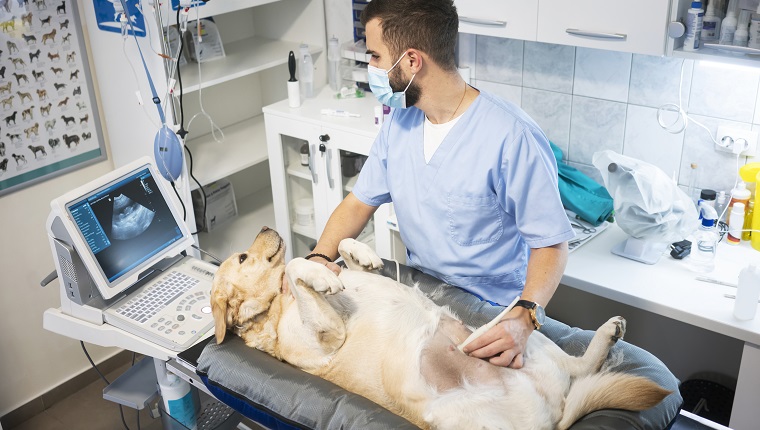Dystocia in dogs is term that can refer to a broad range of difficulties that might arise during the birthing process. These difficulties can arise due to a number of issues that relate to the fetus, the uterus, and the pelvis.
Difficult birthing can begin at any point during the labor process, and in some cases, it can be life threatening. Certain very small breeds of dog are also more likely to have difficult births than other larger breeds.
If you see signs that your dog might be at risk of developing issues while giving birth, then you must consult your veterinarian for a proper diagnosis and course of treatment. Here’s what you should know about the symptoms, causes, and treatments of dystocia in dogs.
Symptoms Of Dystocia In Dogs
Dystocia in dogs results in a wide range of different symptoms depending on the underlying cause of the condition. Some of the most common general symptoms include:
- Labor starting early (before 56 days after conception)
- Labor not starting by 72 days after conception
- Vomiting
- Fever (over 103 degrees Fahrenheit)
- Various discharges (bloody, black and green)
- Straining for a couple of hours without successfully delivering
Causes Of Dystocia In Dogs

Dystocia in dogs results from a range of issues. In some cases, an oversized fetus or a fetus that is positioned abnormally in the birth canal might be the cause.
Other common causes include:
- Inflamed uterus
- Injuries to the pelvic area
- Canine obesity
- Abnormal vaginal issues
- History of having suffered from dystocia before
Additionally, certain small breeds of dog have a higher predisposition for difficult birthing than others. Some of the most common of these dog breeds include:
- Toy Poodles
- Chihuahuas
- Boston Terriers
- Bulldogs
- Pugs
In some cases, very old and very young dogs have also proved very susceptible to difficult briths. Flat-faced dog breeds, known as brachycephalic breeds, are likewise more at risk.
Treatments For Dystocia In Dogs
If you suspect that your dog might be developing dystocia, your veterinarian will want to carry out a full physical examination and ask detailed questions about your dog’s history and lineage. They’ll also conduct an examination of your dog’s cervix and vaginal canal areas.
Vets commonly use a range of tests, including blood glucose, calcium, and blood urea nitrogen, when forming a diagnosis. They can also use X-rays and ultrasounds.
Treatment often involves manual help with the labor process and delivery of the puppies. In some cases, vets can use digital manipulation to successfully reposition puppies. If these attempts to deliver the puppies don’t prove to be effective, the vet will perform a Cesarean section.
It is always useful to talk to your vet ahead of labor if you find out that your dog’s breed has a history of difficult births.
Have you ever cared for a dog suffering from dystocia? What steps did your vet use to help your dog successfully give birth? Tell us all about it in the comments below.









